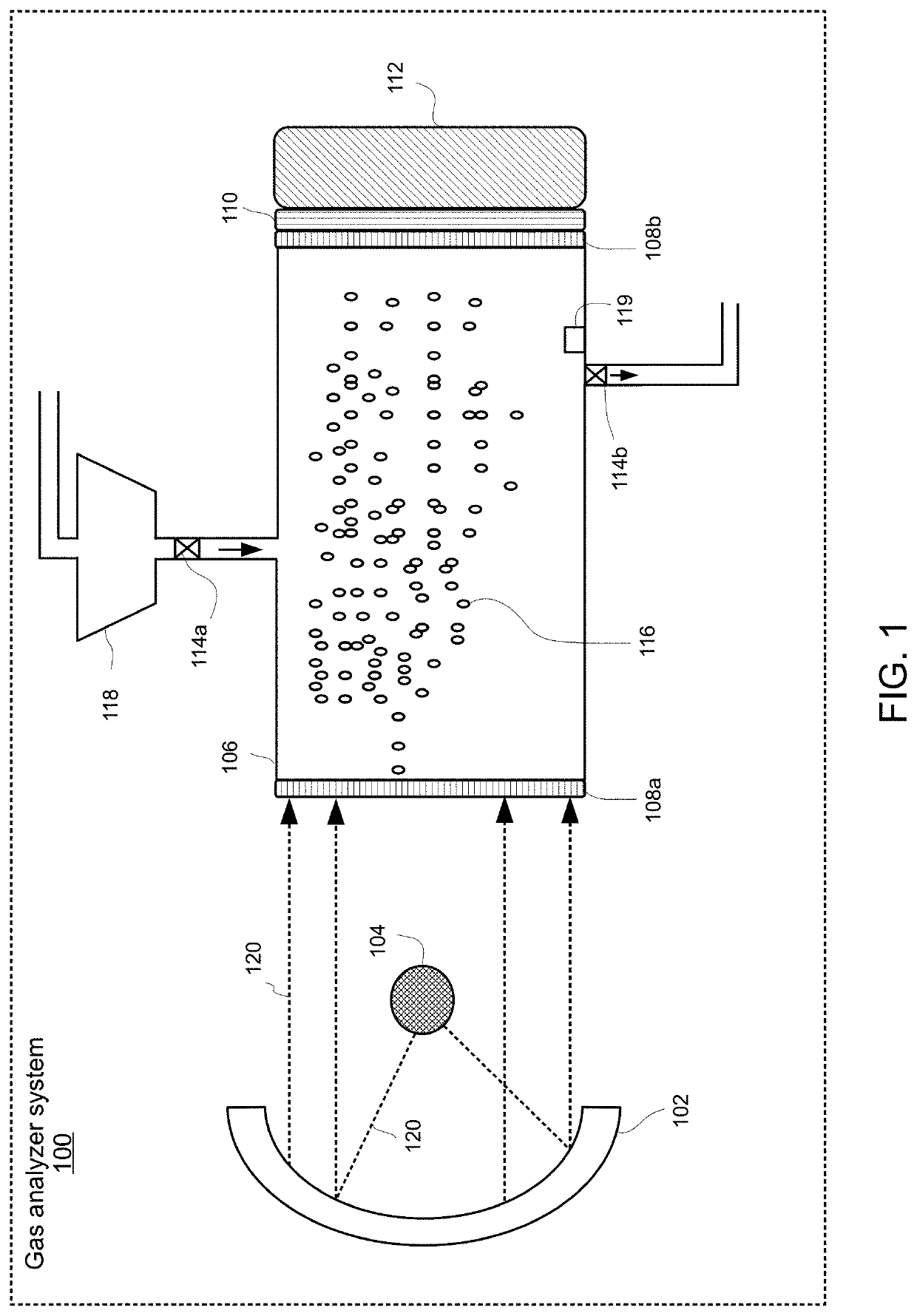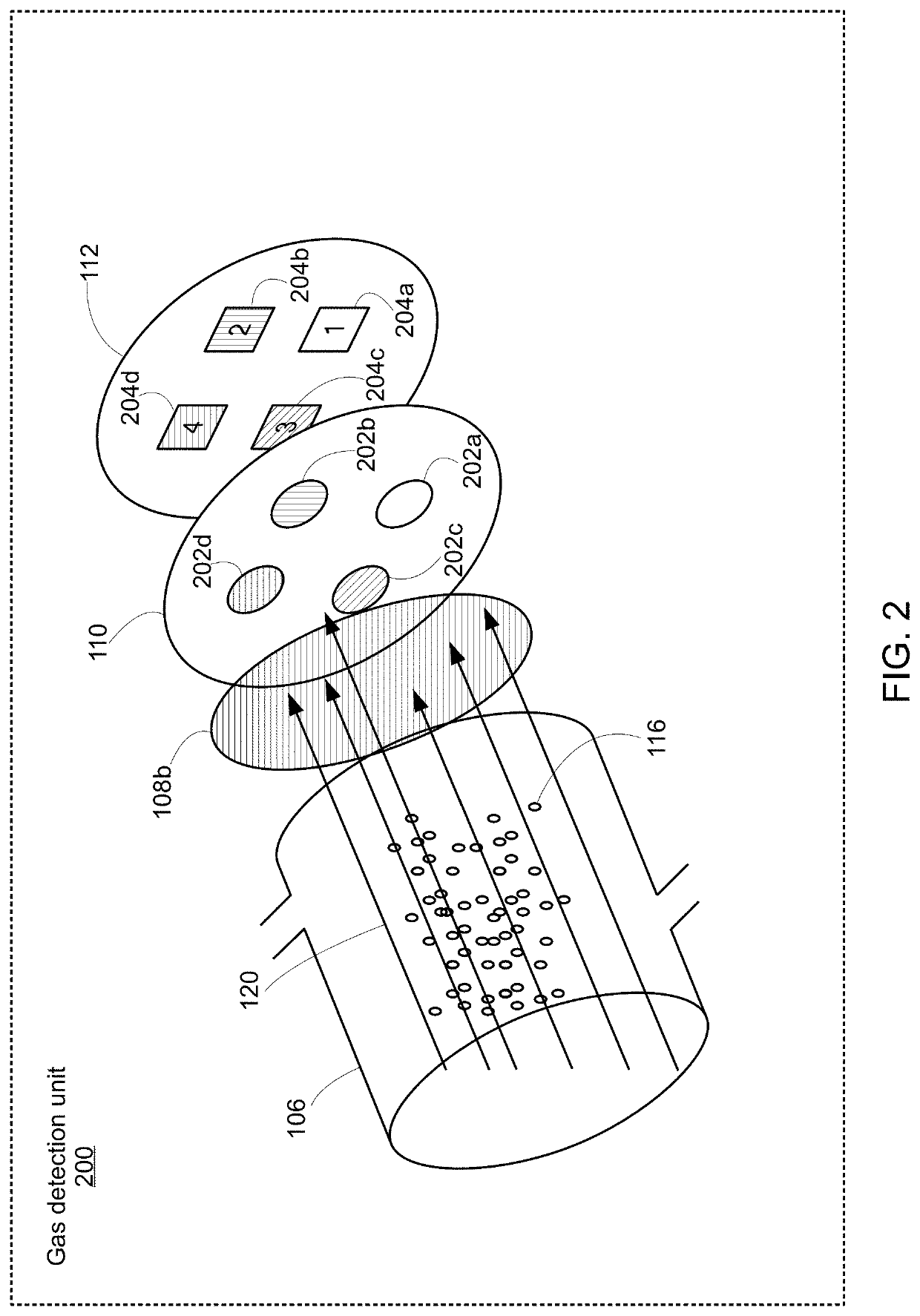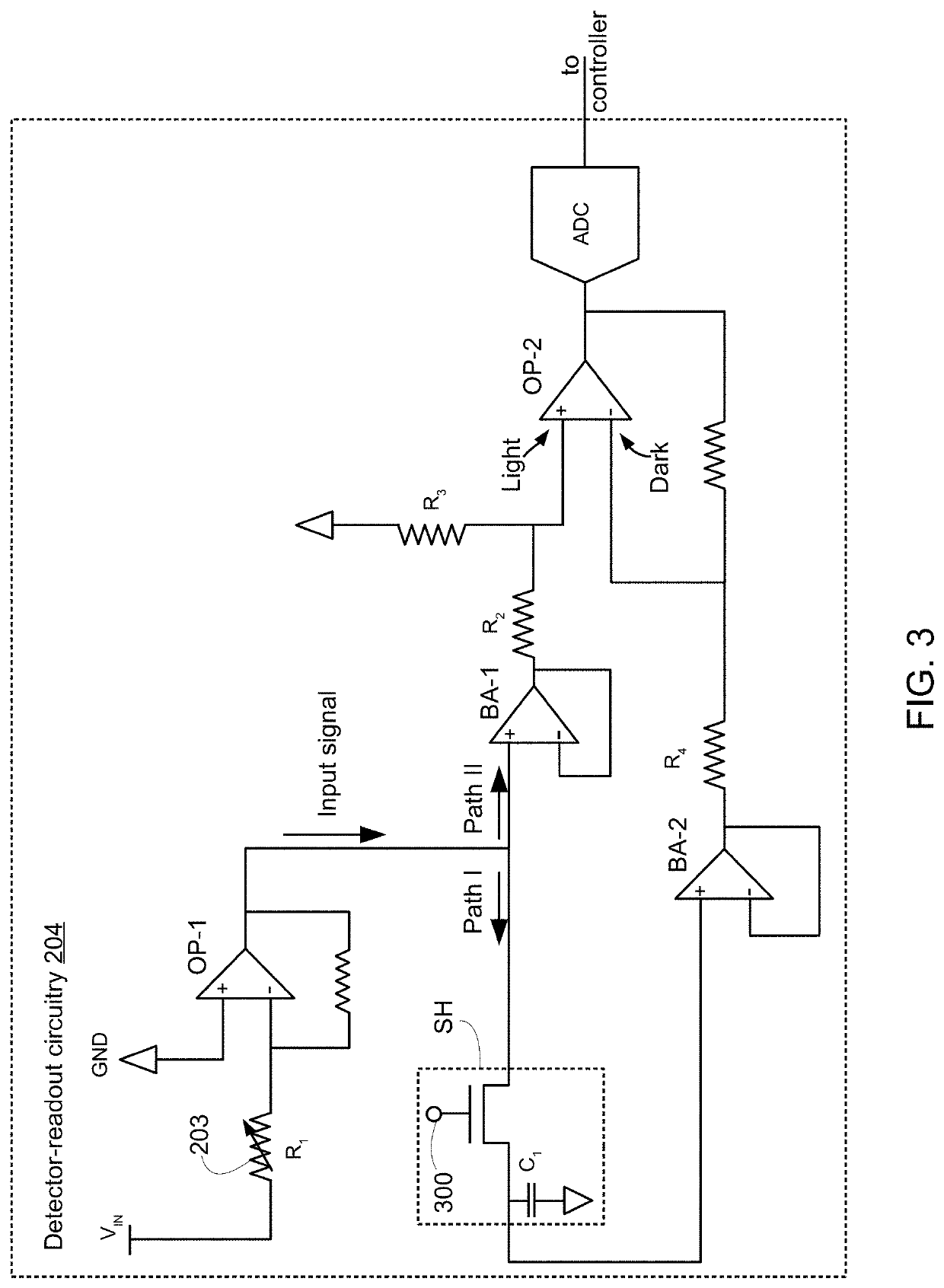Device for monitoring gas emissions and determining concentration of target gas
- Summary
- Abstract
- Description
- Claims
- Application Information
AI Technical Summary
Benefits of technology
Problems solved by technology
Method used
Image
Examples
Embodiment Construction
[0026]FIG. 1 shows a gas analyzer system 100 according to an exemplary embodiment. The gas analyzer system 100 comprises a parabolic reflector 102, a radiation source 104, a gas cell 106, a first germanium window 108a placed upstream of the gas cell 106, a second germanium window 108b that is located downstream of the gas cell, a filter array 110 sandwiched between the second germanium window 108b and a detector-read-out assembly 112. The gas cell further comprises an inlet check valve 114a and an outlet back pressure valve 114b via which gas molecules 116 of a target gas enter and exit the gas cell 106, respectively. The inflow and outflow of gas molecules 116 into and out of the gas cell 106 is controlled by a compressor 118 located prior the inlet valve. A pressure sensor 119 is mounted within the gas cell 106 for measuring the pressure within the cell 106.
[0027]In this embodiment, the gas analyzer system 100 is used to measure the concentration of the target gas. The gas analyze...
PUM
 Login to View More
Login to View More Abstract
Description
Claims
Application Information
 Login to View More
Login to View More - R&D
- Intellectual Property
- Life Sciences
- Materials
- Tech Scout
- Unparalleled Data Quality
- Higher Quality Content
- 60% Fewer Hallucinations
Browse by: Latest US Patents, China's latest patents, Technical Efficacy Thesaurus, Application Domain, Technology Topic, Popular Technical Reports.
© 2025 PatSnap. All rights reserved.Legal|Privacy policy|Modern Slavery Act Transparency Statement|Sitemap|About US| Contact US: help@patsnap.com



